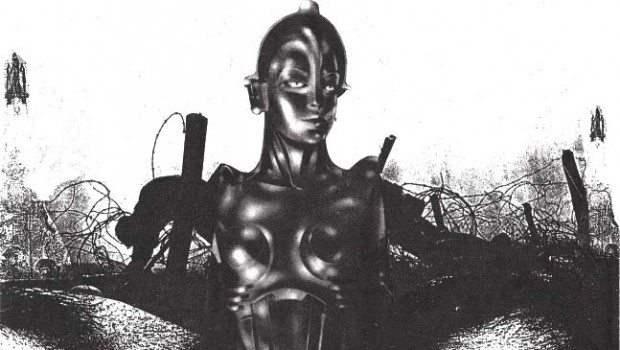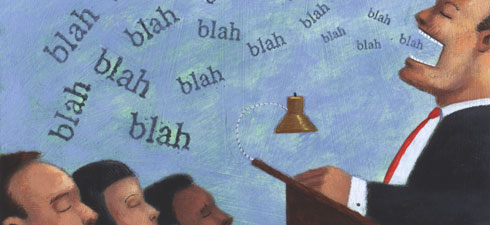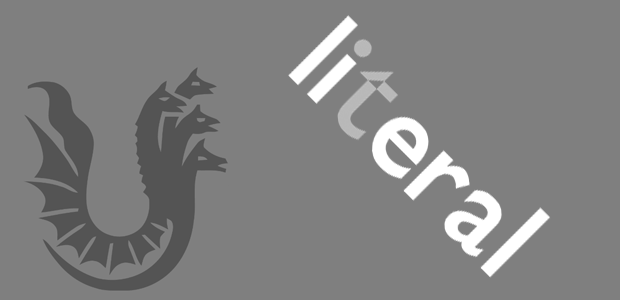Human, All Too Cyborg
Humano, demasiado cyborg
Chris Hables Gray
It is impossible to stay current on the cyborgization of the human. Increasingly intimate machinic-biological interfaces and interventions are transforming us every day. A constant cycle of technological and scientifi c breakthroughs in informatics, genetics, prosthetics, neurosciences, human-machine interface design, bioinformatics, genetic engineering, psychopharmacology and many other areas, is transforming us in a perpetual and permanent technoscientific revolution. There are more scientists and engineers alive right now than in all the rest of human existence combined. And they have better technology.
Just this year, scientists have continued to perfect infecting people with new inheritable genes, drone/human systems became a key weapon system in the war against Al Queda, new vaccines were created to reprogram our immune systems (especially against the inevitable pandemic our recent biological success portends), DARPA launched yet another revolution in prosthetics (wars are always good for artifi cial limb research), the web spread, computers (as links to the net, as photo and text systems, as access to mass media) became even more intercompatible and ubiquitious and tiny, nanotechnology advanced as did neurotechnoscience in its quest for perfect lie detectors, and eventually, mind reading, and mind control technologies, and on and on.
There is now talk of saving the planet from ourselves by cyborging Gaia. The hope is that directly intervening in massive climate change consciously, instead of doing it unconsciously with our wastes and our lusts as we have for the last 200,000 years, will turn out better. We shall see. Certainly, this will make the whole mutilation- prosthetic dance of using tech to cure the problems of tech an integral part of our biosphere. Technoscience produces a “mutilation” on “nature” so it is called on to craft a new prosthesis which is a further mutilation, which then needs new fixes.
We are attaching ourselves to a succession of smaller, more powerful, and more seductive music/ communication/calculation/memorialization technologies. These devices and our cars and our houses and our network software takes over large parts of our daily mental work, making mundane cyborgs: i–cyborg.
Can this process be stopped? Not short of apocalypse. Are humans uncyborgable? Obviously not. Are parts of us uncyborgable? Absolutely, or it is a robot. Should cyborgization be resisted? Yes, often. Not always.
Why? It begins with asking, “Who are we?” What is this animal called human? Homo sapiens sapiens. Wise? So wise we need to say it twice? Hardly. True Homo sapiens is yet to come, let alone sapiens sapiens. Homo ludens? Playful humans? Sometimes, but no more than we are wise. Marx’s Homo faber? That makes some sense; humans are indeed makers. And it starts with making stories, making culture, making sense of the world, or at least enough to manipulate it, to foster fi re, to kill at a distance, to notice the powers of the moon and sun. From there, from planning the hunt and the barbecue, it is just a hop, skip, and a jump to selling insurance, going to the store, and barbecue. Of course, now there are 9 billion of us, and many of us have really nice caves and there’s the car thing and the war machines and television and satellites and vaccines and prosthetics and genetics and…
So where did we come from? We evolved.
Evolution is a process that is too complicated to explain in one coherent narrative. Evolution is a process that is evolving. Evolution manifested us and we perpetuate it. Still, what is evolution? There is something. It reproduces and adapts. There is selection. Repeat infinitely. Seems simple enough, but in the details of this simple process there is incredible complexity.
Darwin identified two forms of selection: natural and artificial. Natural selection is the synthesis of chance and necessity generating increasing complexity out of oneness/nothingness/energy. Matter to particles to atoms to molecules to compounds to stars to planets and solar systems and, sometimes, life. Life, a tangled bank through time that fills the Earth.
Artifi cial selection is human action on other organisms. 20,000 years ago a wolf lurked by the fire and
was lured in by warmth, food, and interaction. Now we have Mexican chihuahuas and English mastiffs. We have corn and roses and kittens and lemon basil. We have patiently worked on nature to make of the tangled bank our garden.
We now see that there is also self-selection. It is obvious with germ line genetic engineering, but it should have been discernible already in our own mating choices, no matter how bizarre. For they have fueled an incredible rate of biological evolution over the last 10,000 years, in the human brain.
But evolution is not just biological. The same forces of chance/reproduction and necessity/selection work on nonliving matter and, with stranger feedbacks, on culture. It isn’t a simple dialectic, it is a cyborg epistemology of thesis, antithesis, prosthesis, synthesis, in different progressions. Evolution’s complexity is beyond any explanation we can have for it because, among other things, evolution is evolving. The clearest, and most important way this is happening is through human ingenuity, the integration of organic (evolved, alive) and inorganic (invented, machinic) systems: cybernetic organisms, cyborgs. Among the most interesting of these cyborgs are us.
By modeling the world we can plan not just to deal what will come, but to shape the future by modifying ourselves and the world. This modeling, this theorizing about the world and explaining it and trying to control it, started with each other. We are social animals and our success has been because of that. Once we evolved culture, tamed fire, and invented tools (the first prosthesis) we were on our way to today.
And today, where are we on our way to? Well, maybe apocalypse (climate change, weapons of mass destruction, pandemic), but maybe on to Homo cyborg. Or more likely, many types of genetically engineered cyborgs: for the sea, for space (the original excuse for inventing the word), for fun. The posthuman is not just a literary or a cultural studies trope, it is a biological reality in the making.
To be effective in the world, we need models of the world and we need to act on them. Unfortunately, as indeterminate as the world is (see the Heisenberg Uncertainty Principle, Godel’s Incompleteness Paradox, the Church-Turing thesis, the Baysian Paradox, Socrates, Spinoza, Nietzche and feminist epistemology) we tend to believe absolutely. Cyborgization runs head on into many old belief systems but of particular interest are the belief systems it spawns.
The Extropians are on one extreme of a spectrum of faith in science. Their central sacrament is that the Singularity (when computer intelligence becomes selfaware) will soon come and artificial intelligence will become so powerful that we could live forever with its help, although it probably will exterminate us; but maybe, just maybe, it’ll keep us around as pets.
The other end of this rainbow isn’t the Luddites, it is the neo-primitives. These “entropians” aren’t just the green anarchists and animals-over-people groups, but also all fundamentalists who believe the rapture (or some other end) is nigh, for they also see a quick end to civilization and a massive die off of humanity. It is the left neoprimitivists vision except for the 144,000 people flying to Heaven, and they don’t worry about the Earth left behind.
Instead of waiting for the rapture of the Singularity or the Apocalypse, we have to evolve a sustainable existence. The Luddites weren’t against technology, for the tech they had mastered and that framed their social relations was what they were defending. They were master craftsmen of the handloom, once the pinnacle of technological sophistication. Independent contractors, they brought wool that their children processed into fibers, that the women spun into thread, which they wove into cloth.
Some capitalists realized that with semi-automated weaving machines run by women and children (whose nimble little fingers were particularly helpful in keeping the machines running) would produce cheaper cloth. Yes, it destroyed families, shattered communities, unemployed men and was dependent on child labor, but those costs did not show on the bottom line. The weavers smashed some of the new “frames”, this was made a capital crime, and capitalism marched on. But the perspective of the Luddites survives. Everywhere, people resist technological change in favor of sophisticated technological systems with different social relationships. The activists who pull up genetically modified potatoes and who march and petition and sue to resist GM foods are likely to practice biodynamic gardening, which is based on a wide body of empirical, often scientific, research and practices.
So, our cyborgization is overdetermined, even Luddites can be cyborged. It isn’t just the desire to be well and live longer through cyborg medicine, but to master war with human-machine weapon systems, to maximize productive potential with better interfaces and integrations, to live in the sea or in space, to fulfill our wildest fantasies. Or to exercise dominion over others.
The issue isn’t if we’ll be cyborged, but how and who will decide. As Donna Haraway proclaimed a quarter of a century ago–we must take responsibility for our cyborgization. We must take responsibility for our evolution. Otherwise, somebody else will. The Borg of the Star Trek universe are a good warning. If it isn’t participatory evolution with cyborg family values, it will not be the blind hand of chance, but the vulgar fist of governments, corporations and other systems of power- over that for their short term ends will warp us into nightmares. But here the Borg are wrong. Resistance isn’t futile, it is fertile. Evolution is a series of revolutions. It is evolve, or die…off.
Es imposible estar al día con la cyborgización de lo humano. Las interfases mecánico-biológicas, cada vez más íntimas, nos están transformando cada día. Un ciclo constante de descubrimientos tecnológicos y científicos en la informática, genética, prostética, neurociencia, el diseño de interfases mecánico-humanas, la bioinformática, ingeniería genética, psicofarmacología y muchas otras áreas, nos está llevando a una revolución tecnocientífi ca permanente. Hay más científicos e ingenieros vivos en este momento que en todo el resto de la historia humana combinada. Además, cuentan con mejor tecnología.
Precisamente este año los científicos han seguido perfeccionando la manera de infectar a las personas con nuevos genes hereditarios, los sistemas teledirigidos/ humanos se convirtieron en un sistema de armamento clave en la guerra en contra de Al Qaeda, se crearon nuevas vacunas para reprogramar nuestros sistemas inmunes (especialmente contra la inevitable pandemia que ha vaticinado nuestro reciente éxito biológico), la Agencia de Proyectos de Investigación Avanzada de la Defensa (DARPA) lanzó una revolución en la prostética (las guerras siempre son buenas para las investigaciones sobre prótesis), la expansión de la red, las computadoras (en tanto nexos a la red, sistemas de fotografía y texto, acceso a los medios masivos) se hicieron aún más inter-compatibles, ubicuas y diminutas, la nanotecnología avanzó tanto como la neuro tecno-ciencia en su búsqueda de detectores de mentiras perfectos, y tarde o temprano, de lectura de la mente y tecnologías para el control de la mente, etcétera, etcétera.
Hoy día se habla de salvar al planeta de nosotros mismos mediante la cyborgización de Gaia. La idea es que si intervenimos directamente en el cambio climático masivo de manera consciente, en lugar de hacerlo inconscientemente con nuestros desperdicios y lujuria, como lo hemos venido haciendo los últimos 200 mil años, el resultado sería positivo. Ya veremos. Sin duda esto convertirá toda esta danza de mutilación prostética que utiliza la tecnología para curar los problemas de la propia tecnología, en una parte integral de nuestra biósfera. La tecnociencia produce una “mutilación” en la “naturaleza”, lo que conduce a la fabricación de una nueva prótesis, la cual es una mutilación que va aún más lejos, y que entonces necesita de nuevos ajustes.
Nos estamos atando a una cadena de tecnologías de música, comunicación, cálculo y mnemotecnia cada vez más pequeñas, poderosas y seductoras. Estos artefactos, nuestros autos, casas y nuestra red de software absorben una gran parte de nuestro trabajo mental de cada día, haciendo de unos cyborgs mundanos, unos i-cyborgs.
¿Se puede detener este proceso? No menos que el Apocalipsis. ¿Los humanos son no cyborgizables? Obviamente, no. ¿Algunas partes de nosotros son no cyborgizables? Por supuesto. ¿Se debe uno oponer a la cyborgización? Sí, a menudo; no siempre.
El “por qué” comienza con las preguntas: ¿quiénes somos?, ¿qué es este animal llamado humano? Homo sapiens sapiens. ¿Es listo? ¿Tan listo que necesitamos decirlo dos veces? Difícilmente. El verdadero Homo sapiens aún está por venir, ni se diga el sapiens sapiens. ¿El homo ludens? ¿Humanos juguetones? Algunas veces, pero no más que lo listos que somos. ¿El homo faber de Marx? Eso tiene sentido; en efecto, los humanos son hacedores. Y eso comienza con el hacer historias, cultura, obtener un sentido del mundo o al menos el suficiente para manipularlo, hacer fuego, matar a distancia, percatarse de los poderes del sol y de la luna. Desde ahí, desde planear la cacería y la carne asada hay tan sólo un brinco a vender seguros, ir a la tienda y hacer la carne asada. Desde luego, ahora somos 9 billones, y muchos de nosotros tenemos cuevas muy agradables y está el tema del coche y la maquinaria bélica y la televisión y los satélites, vacunas, la prostética, la genética…
¿Así que de dónde venimos? Evolucionamos.
La evolución es un proceso muy complicado como para explicarlo en una narrativa coherente. La evolución es un proceso que está evolucionando. La evolución se nos manifestó y nosotros la perpetuamos. Aun así, ¿qué es la evolución? Se reproduce y se adapta. Está además la selección. Repetir infinitamente. Parece suficiente mente sencillo, pero en los detalles de este proceso hay una complejidad increíble.
Darwin identificó dos formas de selección: natural y artificial. La selección natural es la síntesis de la probabilidad y la necesidad que genera una mayor complejidad a partir de la individualidad/nada/energía. De la materia a las partículas, átomos, moléculas, compuestos, estrellas, planetas y sistemas solares y, a veces, en la vida. La vida: un banco enredado a través del tiempo que llena la Tierra.
La selección artificial es la acción humana ejercida sobre otros organismos. Hace 20 mil años un lobo merodeaba cerca del fuego y se sintió atraído por el calor, la comida y la interacción. Ahora tenemos los perros chihuahueños mexicanos y los mastines ingleses. Tenemos maíz, rosas, gatitos y albahaca con limón. Hemos trabajado pacientemente a la naturaleza para hacer de ese banco enredado nuestro jardín.
Ahora vemos que también hay autoselección. Resulta obvio en la línea de gérmenes de la ingeniería genética, pero es algo que ya debió haberse distinguido desde las decisiones que nosotros mismos tomamos al aparearnos, sin importar qué tan extrañas, pues han alimentado un ritmo increíble de evolución biológica en el cerebro humano durante los últimos 10 mil años.
Pero la evolución no es sólo biológica. Las mismas fuerzas de probabilidad/reproducción y necesidad/selección operan en la materia inerte y, con resultados extraños, en la cultura. No se trata tan sólo de una simple dialéctica, es una epistemología cyborg de tesis, antítesis, prótesis, síntesis, en progresiones diferentes. La complejidad de la evolución está más allá de cualquier explicación que podamos aventurar porque, entre otras cosas, la evolución está evolucionando. La manera más clara e importante en que esto está ocurriendo es a través de la ingenuidad humana, la integración de sistemas orgánicos (vivos, evolucionados) e inorgánicos (inventados, mecánicos): organismos cibernéticos, cyborgs. Entre los cyborgs más interesantes estamos nosotros.
Al modelar el mundo podemos planear, no sólo enfrentar lo que vendrá, y darle forma al futuro al modifi carnos a nosotros mismos y el mundo. Este modelar, este teorizar acerca del mundo, explicarlo y tratar de controlarlo comenzó el uno con el otro. Somos animales sociales y nuestro éxito se debe a ello. Una vez que evolucionamos la cultura, domamos el fuego e inventamos herramientas (la primera prótesis), iniciamos el camino hacia donde nos encontramos hoy.
Y hoy día, ¿hacia dónde estamos en camino? Bueno, tal vez hacia el Apocalipsis (cambio climático, armas de destrucción masiva, pandemias), pero tal vez hacia el Homo cyborg. O, más probablemente, hacia varios tipos de cyborgs diseñados con ingeniería genética: para el mar, el espacio (la excusa original para inventar el mundo), por diversión. El posthumano no es sólo un tropo de los estudios literarios o culturales, es una realidad biológica en proceso.
Para ser eficaces en el mundo necesitamos modelos del mundo y necesitamos actuar sobre ellos. Desafortunadamente, tan indeterminado como es todo (véase el principio de la incertidumbre de Heisenberg, la paradoja de la completitud de Gödel, la tesis de Church-Turing, la paradoja bayesiana, Sócrates, Spinoza, Nietzsche y la epistemología feminista), nosotros tendemos a creer de manera absoluta. La cyborgización avanza de frente hacia varios sistemas viejos de creencia, pero los sistemas de creencia que ella misma genera son de particular interés.
Los extropianos están en un extremo del espectro de fe en la ciencia. Su sacramento central es que la Singularidad (cuando la inteligencia de las computadoras sea autoconsciente) pronto vendrá y la inteligencia artifi cial será tan poderosa que podremos vivir para siempre con su ayuda aunque probablemente nos exterminará; pero quizá, quizá nos permita estar por ahí como sus mascotas.
El otro lado de este arco iris no son los ludditas, sino los neo-primitivos. Estos “entropianos” no son sólo los verdes anarquistas y grupos del tipo animales-antesque- las-personas, sino también todos los fundamentalistas que creen que el Juicio Final (o algún otro fin) está cerca; también ven que el fin de la civilización, así como una inmensa mortandad de la humanidad están próximos. Esta es la visión que dejaron los neo-primitivistas salvo por las 144 mil personas volando al cielo, y porque ellos no se preocupan de la Tierra que dejan atrás.
En lugar de esperar el día del Juicio Final de la Singularidad o el Apocalipsis tenemos que evolucionar en una existencia sostenible. Los ludditas no estaban en contra de la tecnología, ya que la tecnología que ellos habían aprendido a dominar y que enmarcaba sus relaciones sociales era lo que estaban defendiendo. Eran maestros artesanos de telares manuales, alguna vez el pináculo de la refinación tecnológica. Dado que eran contratistas independientes, traían lana que sus hijos procesaban para hacer fibras, las cuales eran convertidas en un entramado por las mujeres y que ellos, a su vez, convertían en tela.
Algunos capitalistas se dieron cuenta de que con máquinas de tejido semiautomáticas manejadas por mujeres y niños (cuyos dedos pequeños y hábiles eran particularmente útiles para mantener las máquinas funcionando) producirían tela más barata. Sí, esto destruiría familias, haría añicos las comunidades, desemplearía a los hombres quienes dependerían de la fuerza laboral infantil, pero esos costos no aparecían en el fondo de la cadena. Los tejedores aplastaron algunos de los nuevos “marcos”, esto se convirtió en un crimen capital, y el capitalismo siguió adelante, pero la perspectiva de los ludditas sobrevive. Por todas partes la gente se resiste al cambio tecnológico pero está en favor de sistemas tecnológicos refinados con diferentes relaciones sociales. Los activistas que se oponen a las papas genéticamente modificadas (y que marchan, exigen y hacen demandas para rechazar estos alimentos genéticamente modificados) practican, con frecuencia, la jardinería biodinámica, que está basada en un corpus amplio de investigación y prácticas empíricas y a menudo científicas.
Así que nuestra cyborgización está sobredeterminada: hasta los ludditas pueden ser cyborgizados. No es sólo el deseo de estar bien y de vivir más tiempo a través de la medicina cyborg, sino de dominar la guerra con sistemas de armas mecánico-humanas, para maximizar el potencial productivo con mejores interfases e integraciones, para vivir en el mar o en el espacio, para cumplir nuestras fantasías más disparatadas. O para practicar el dominio sobre otros.
El tema no es si seremos cyborgizados, sino cómo y quién va a decidir sobre esto. Como declaró Donna Haraway hace unos veinticinco años: “Debemos hacernos responsables de nuestra cyborgización”. Tenemos que hacernos responsables de nuestra evolución. De otro modo, alguien más lo hará. Los Borg del universo de Star Trek son una buena advertencia. Si no es la evolución participativa con valores familiares cyborg, no será la ciega mano de la probabilidad, sino el puño vulgar de los gobiernos, corporaciones y otros sistemas de poder que para sus fines a corto plazo nos torcerán hasta hacernos pesadillas. Pero aquí es donde se equivocan los Borg. La resistencia no es banal, es fértil. La evolución es una serie de revoluciones. Se trata de evolucionar o… morir todos, uno por uno.










